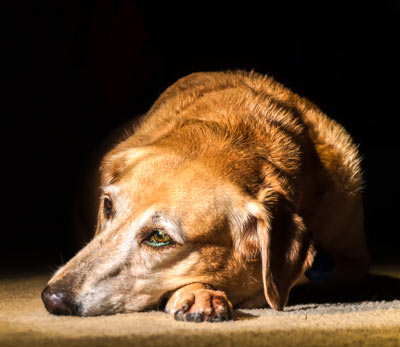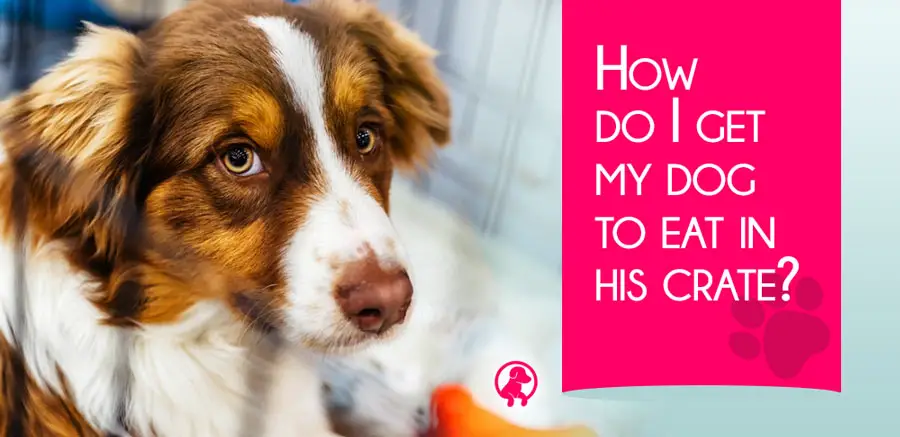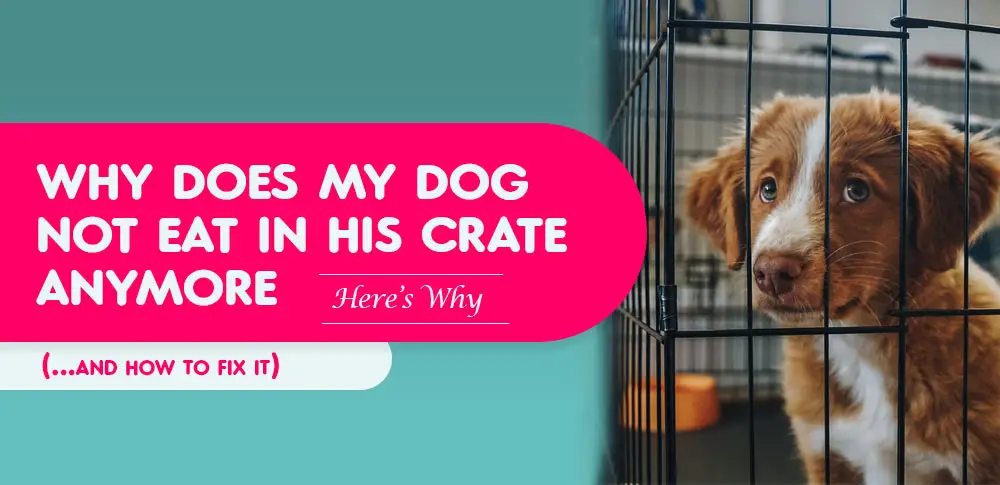Dogs can be stubborn at times. But if your dog is refusing to eat in his crate even if it’s a comfy crate, there are lots of reasons for his behavior.
Why Does My Dog Not Eat From in Crate Anymore
Your dog may not eat in his crate anymore as a result of confinement anxiety, loneliness, separation anxiety, and lack of comfort. It could also be due to a lack of training, lack of space, and uncleanliness.
There are several reasons for this behavior, and knowing the particular one(s) could in fixing it faster. We’ve explained the major reasons in details in this article.
Read on to find out.
7 Reasons your dog is refusing to eat in his crate
Confinement Anxiety
Confinement anxiety is a form of anxiety that is uncommon in dogs. If your dog refuses to eat in his crate, he could be suffering from confinement anxiety.
Confinement anxiety in dogs is a form of anxiety that arises when a dog is kept in a confined area like crates. This form of anxiety is always mistaken for separation anxiety.
Dogs with confinement anxiety are always anti-crate. They detest staying in crates, and they refuse to do anything while in the crates. They do not necessarily care if they are left alone in a house. They don’t just want to be confined in a small space.
When put into crates, they do everything in their power to be given freedom. Dogs with confinement anxiety get so anxious that they don’t care if you place food inside their crate.
To be certain that your dog suffers from confinement anxiety, there are some signs he’ll tend to display when put into a crate. Dogs with confinement anxiety display active signs, passive signs, and physiological signs.
Some active signs include barking, aggression, destructive behavior, jumping, and pacing. Some passive signs include whining, tucked tail, foreleg lifting, hiding, cowering, and more.
The physiological signs include tensed muscles, trembling, salivation, urination, and dilated pupils.
Suggested reading: Why do my dogs eyes water when she eats (Explained!)
Loneliness
Another reason your puppy won’t eat in her crate could be due to loneliness. Dogs like humans can suffer from loneliness. This loneliness can birth unusual habits like withdrawal.
Is your dog’s refusal to eat in crates a new habit he’s developed?
If yes, then your dog could be experiencing depression.
If you have the habit of leaving your dog in his crates for hours, there’s a high chance that he has developed depression as a result of loneliness. This depression can cause your dog to lose interest in eating in his crate. The only time he will eat is if he is let out of his crate.

If you release a depressed dog from his crate, he will feel less depressed and will tend to eat more.
A depressed dog will display some unique behaviors. Hence, to be certain that your dog refuses to eat due to depression and loneliness, here are some signs & behaviors to look out for.
Destructiveness: If your dog has the habit of chewing anything he finds in his crate, he could be suffering from loneliness.
Clinginess: If he doesn’t want to get away from your side when let out of the cage, he is lonely.
Sleepiness: A dog that suffers from loneliness sleeps most of the time.
Behavioral Shift: A dog suffering from loneliness will tend to behave differently from the way he normally does.
Lack of interest in playing: Lonely dogs tend to lack interest in things that should make them happy.
Separation Anxiety
Your dog may be refusing to eat while in his crate due to his separation anxiety problems.
As mentioned previously, Separation anxiety is different from confinement anxiety. Unlike confinement anxiety, Separation anxiety is common in dogs.
Separation anxiety is a form of anxiety that is triggered when a dog is kept out of reach from the person he’s overly attached to.
A dog with separation anxiety will lack interest in doing lots of things if he is separated from the person he’s attached to. Dogs with separation anxiety also panic as soon as they are left alone in a crate. This panic causes them to lose interest in things like eating.
If separation anxiety is the reason for your dog’s refusal to eat, here are other signs he’ll tend to display alongside his refusal to eat.
Agitation: a dog with separation anxiety will get agitated when you try to place him in his crate. He will try every means possible to escape while you try to push him into his crate.
Barking: If your dog suffers from separation anxiety, he will back and howl when you place him in his crate.
Escape Attempt: If you place your dog in his crate and walk away, he will try escaping. This is a sign of separation anxiety.
Lack of Comfort
If your dog previously slept with you on your bed, there’s a high chance that he must have gotten too comfortable with your bed. So he’ll feel discomfort whenever he is placed in his crate.
Most dogs refuse to eat in an environment where they feel uncomfortable. Discomfort causes a lack of appetite in most dogs
How’s your dog’s crate?
If you want your dog to feel comfortable in his crate, you need to make the crate comfortable for him.
Your dog’s crate shouldn’t be an empty dog crate. Make provisions for dog bedding that is suitable for crate houses.
To be certain that your dog refuses to eat due to the discomfort he feels in his crate, here are some signs to watch out for.
Changes in Vocalization: if you notice that your dog whimpers, grumbles, or whines more often while in his crate, then there’s a high chance that he feels some form of discomfort.
Restlessness: If your dog keeps pacing around while in his crate, this is a sign that he feels uncomfortable.
Increased Breathing Rate
Lack of Training
If you haven’t trained your dog to eat in a crate, don’t expect him to understand that he should eat in his crate.
Dogs with a lack of training tend to exhibit unexpected and strange behaviors. This is because they haven’t been taught to conform to a standard of living.
Dogs are direct but domesticated descendants of wolves. They are born with an instinct to be free all the time. So you need to train them on how to be domesticated.
You can decide to train him by yourself, or you can enroll him in a dog training school. However, it’s easy to train your dog to eat in his crate.
Uncleanliness
If your dog won’t eat in his crate anymore, you need to inspect how clean his crate is.
Most dogs only like to eat in clean places. If you have ever noticed that your dog doesn’t like to get himself dirtied up, then there’s a high chance that your dog loves cleanliness.
Before luring your dog into his crate, make sure to clean his crate. It will help to also place his favorite toy inside the crate.
If he finds the crate clean, he will naturally feel comfortable eating in it.
Lack of Space in Crates
How big is your dog’s crate? If it isn’t big enough to fit two dogs, you shouldn’t let your dog use it.
Most dogs detest cramped areas. If your dog’s crate isn’t big enough, chances are that your dog isn’t happy with his crate. His lack of happiness could be the reason for the behavior.
His refusal to eat while in his crate could also be his way of telling you how much he hates the crate.
If your dog shows destructive behavior while in his crate or if he refuses to enter his crate when you force him to, this is a sign that he hates his crate.
Can separation anxiety cause a dog to not eat while in crate?
Yes! Separation anxiety can cause a dog to not eat while in a crate.
According to a study on Canine separation anxiety: strategies for treatment and management by Rebecca J Sargisson, it was noted that dogs with separation anxiety tend to lose appetite in foods.
Another journal by the American Veterinary Medical Association in 2009 also supported the notion that dogs lose appetite when they suffer from separation anxiety.
According to the study, stress and the feeling of anxiety in dogs can lower their interest in eating. This study explains that anxiety in dogs activates the sympathetic nervous behaviors in dogs. This causes them to be in a state that hinders relaxation.
How do I get my dog to eat in his crate?

If you suspect that your dog suffers from loneliness, separation anxiety, or confinement anxiety, you shouldn’t force him to eat in his crate. A visit to a vet doctor will be the right thing to do.
Depression, seperation anxiety, and confinement anxiety are treatable illness in dogs.
If separation and confinement anxiety isn’t the reason for your dog’s refusal to eat in his crate, here are ways you can make your dog start eating in his crate.
Train Him To Eat In His Crate
Dogs exhibit unusual behaviors due to a lack of training. To make your dog start eating in his crate, you need to train him to do so.
Here’s how to train your dog to eat in his crate.
Option One:
Place your dog inside his crate and offer him a bowl of his food. Leave the bowl in his crate for about 10 minutes. If he refused to eat within ten minutes, take the bowl away from him.
Wait for about one to three hours and present him with the same bowl of food. If he doesn’t eat, repeat this action after about an hour. He’ll eventually eat a little.
To make this method work, you have to repeat it for the next few days. Always give your dog his meal when he’s in the crate. If he refuses to eat, take the food away and wait for some hours. He’ll crack eventually.
Option Two: Hide Treats in His Crate
If you hide your dog’s favorite treats in his crate, he will begin to enjoy entering his crate.
When he wanders into his crate and finds his favorite treats or toys, he will begin to look at his crate as a comfort zone. This will make him feel comfortable when you instruct him to eat in his crate.
Make His Crate Comfortable to Eat in
One way to make your dog comfortable in his crate is by furnishing his crate with a dog’s bed.
A dog’s bed will make your dog feel comfortable when he lies on it. If he feels comfortable on his bed, he’ll deem it right to eat in his crate.
Make sure to buy a dog crate that gives your dog lots of space to play in. The dog crate also has to be cleaned all the time.
Nevertheless, it isn’t necessary for dogs to eat in their crates. If your dog refuses to eat in his crate even after trying the above methods, you should give it a rest.
If you have other dogs who have no problems eating in their crates, your dog will eventually emulate their behavior. But if he doesn’t, it’s fine. Don’t force him!
Final thought on why dog refuses or won’t eat in crate anymore
In conclusion, there can be various reasons why a dog won’t eat in their crate. It is important to investigate the possible causes and take appropriate steps to address the issue.
It is crucial to make sure the crate is a comfortable and safe space for the dog, and to gradually re-introduce food in a positive and encouraging way. Consultation with a veterinarian or a professional dog trainer may also be helpful in finding a solution to this issue.
With patience and persistence, it is possible to train a dog to eat comfortably in their crate again.


